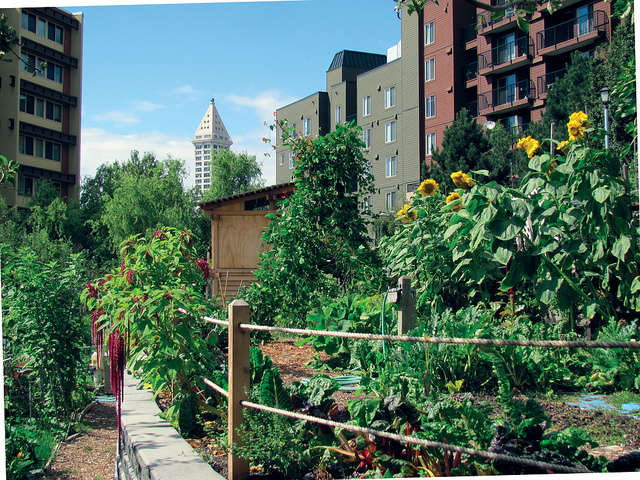Little Known Facts About City Blooming.
Little Known Facts About City Blooming.
Blog Article
Examine This Report on City Blooming
Table of ContentsSome Known Facts About City Blooming.Getting My City Blooming To WorkThe Main Principles Of City Blooming The 45-Second Trick For City BloomingHow City Blooming can Save You Time, Stress, and Money.
Intrigued in growing food offer for sale in the City of Chicago? Considering beginning a community yard? Adjustments to the Chicago Zoning Regulation allow agricultural usages like area yards and metropolitan farms in several components of the city. Below is a listing of frequently asked questions concerning the regulations and laws that growers must consider when intending an urban agriculture project.
The zoning change does not change any type of other codes taking care of composting, building licenses, buying or leasing City had building, service licenses or ecological contamination. There are existing codes that regulate these concerns and they stay completely impact and may be relevant to your job. Area yards are commonly owned or taken care of by public entities, public organizations or community-based companies and maintained by volunteers.
Urban ranches expand food that is planned to be marketed, either on a nonprofit or for-profit basis. Because of their commercial purpose, urban ranches require a service permit. Yes. A community garden is enabled to offer excess produce that was grown on website if the sales are accessory or subordinate to the garden's primary purpose defined above.
City Blooming Fundamentals Explained
Composting is enabled however only for plant product that is produced and used on website. The amount of compost material can not go beyond 25 cubic lawns at any offered time according to the standards in 7-28-715 of the City's Municipal Code. Yes. Due to the fact that the dirt at most brand-new garden websites requires changing, compost, dirt, wood chips, or various other products can be obtained to create or improve the expanding area - landscaping.

If a building permit is needed after that the hoophouse will certainly be considered an accessory structure. You can discover even more concerning the structure license needs by getting in touch with the Department of Structures. The 25,000-square-foot size restriction is meant to avoid a single community garden from dominating an offered block or diminishing the block's existing residential or business character.
The limit does not apply to yards situated in Public Open Room (POS) districts. Can there be greater than one neighborhood yard that is 25,000 square feet on a single block? Yes. The size limitation applies to specific gardens, not to private blocks. No. Secure fencing is not needed, however, gardens that have large car parking locations might be called for to install fence or other landscape design features.
Some Known Factual Statements About City Blooming
B1 & B2 districts need that all business usage tasks be carried out inside. R districts limit commercial activity. The laws mirror the purpose and intent of the Zoning Code. Is fencing required for city ranches? Yes. Fences may be called for, along with landscape design and screening, for sure auto parking locations and outside work or storage locations depending upon place and the specific activity occurring.
Urban ranches require structure authorizations and zoning approvals prior to construction (fruit and vegtables). Other forms of city testimonial might be required depending on certain structures, tasks, dimension, landscape design, licensing, public health and stormwater management issues.
The Division of Business Matters and Consumer Security can aid establish the details type of business license that's needed. Off street auto parking is needed for a lot of business jobs in Chicago. The required number of auto parking areas is based on the number of employees functioning on website and not the square video footage of the expanding space.
3 Simple Techniques For City Blooming

A city farm can offer compost material produced on website, nevertheless, the operation has to comply with the regulations in 7-28-715 of the Chicago Municipal Code. Aquaponic systems are enabled indoors on city farms in several zoning districts.
Approximately five hives or colonies of honey may be kept as an accessory usage. Beekeepers have to register with the Illinois Division of Agriculture. For more details concerning the suggested zoning change you may speak to the Division of Real Estate and Economic Advancement, Bureau of Preparation and Zoning at 312.744.8563.
Farming in Visit This Link cities and metropolitan areas A metropolitan ranch in Chicago. Urban farming describes different practices of growing. https://x3n7gir0m43.typeform.com/to/xy4y6eO6, processing, and distributing food in urban locations. The term also relates to the location activities of animal husbandry, tank farming, beekeeping, and cultivation in a metropolitan context. Urban agriculture is differentiated from peri-urban farming, which happens in rural locations beside suburbs.
The smart Trick of City Blooming That Nobody is Talking About
, who look for to develop social networks founded on a shared values of nature and area holism. These networks can develop by means of official institutional assistance, becoming incorporated into neighborhood community preparation as a "change community" motion for sustainable metropolitan development.
In either instance, the much more direct access to fresh veggie, fruit, and meat products that might be become aware with city agriculture can enhance food security and food security while decreasing food miles, bring about reduced greenhouse gas exhausts, therefore contributing to environment adjustment mitigation. Some of the very first evidence of city agriculture originates from Mesopotamia.
Report this page